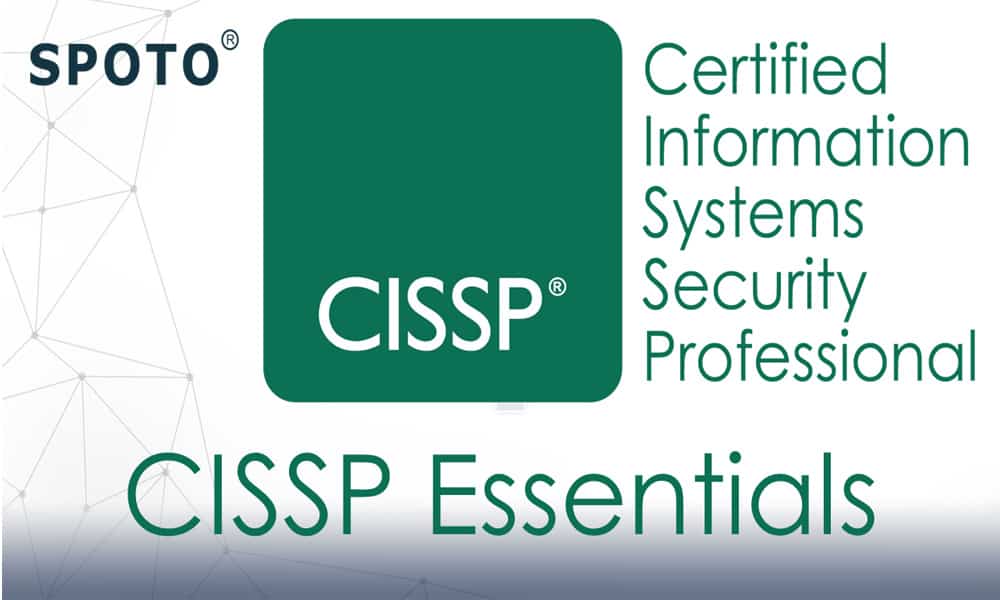CISSP domains decoded: Mastering these 10 security domains for obtaining CISSP certification

Table of Contents
- ISC2 would be including 10 security operations domains
- Access Control Systems and Methodology:
- Telecommunications and Network Security:
- Business Continuity Planning and Disaster Recovery Planning:
- Security Management Practices:
- Security Architecture and Models:
- Law, Investigation, and Ethics:
- Application and Systems Development Security:
- Cryptography:
- Computer Operations Security:
- Physical Security:
One of the Most demanded and difficult-to-achieve IT certifications would be the CISSP (Certification for Information System Security Professional) certification. Obviously, the CISSP exam isn’t considered for everyone, but even if you aren’t interested in earning your CISSP certification, it would be worth looking at these 10 security domains. To gain in-depth knowledge and learn these domains better, you should check out the courses which are being offered at the SPOTO Club. 
ISC2 would be including 10 security operations domains
These security certifications domains are:
- Access Control Systems and Methodology
- Telecommunications and Network Security
- Business Continuity Planning and Disaster Recovery Planning
- Security Identity and Access Management Practices
- Security Architecture and Models
- Law, Investigation, and Ethics
- Application and Systems Development Security
- Cryptography
- Computer Operations Security
- Physical Security
Access Control Systems and Methodology:
The first security domain, Access Control Systems, and Methodology is considered to be quite an essence of computer security and risk management. This security domain would be particularly focused on protecting critical systems resources from disclosure while making those resources available to authorized personnel or unauthorized modification. On the surface, this would be a particular information security professionals domain that would appear to be included access permissions, user names, and passwords.
Telecommunications and Network Security:
One of the largest as well as most encompassing of the security domains is the Telecommunications and Network Security domain. It’s easy to think of passwords when you would be thinking of network security. Telecommunications as well as Network Security domain would be focusing on communications, protocols, as well as network services, and the potential vulnerabilities associated with each.
Business Continuity Planning and Disaster Recovery Planning:
You could say that business continuity planning, as well as the disaster-recovery security, would be involving your organization’s very survival, not just the security architecture and engineering of its data. The primary issues of this domain would be to deal effectively with catastrophic systems failures, natural disasters, as well as other types of service interruptions.
Security Management Practices:
This particular domain is considered to be so often overlooked. The Security Management Practices domain would be having less to do with computers than with people. The primary focus of this domain would be security awareness. This means educating your IT staff as well as end-users about asset security threats.
Security Architecture and Models:
This domain would be focusing mostly on having security policies as well as procedures in place. This particular security assessment and testing domain would be involving the policy planning for just about every type of security issue that has been discussed here.
Law, Investigation, and Ethics:
This is one of the more interesting security domains. As the name implies, this security domain would be covering all the legal issues which would be associated with computer communication and network security.
Application and Systems Development Security:
This domain would be covering things like database security models as well as the implementation of multilevel software development security for in-house applications. This domain would be also addressing some other very interesting issues. The first issue that this domain looks after is what happens when an application needs a different set of permissions than the user, who would be running the application.
Cryptography:
Cryptography means the encryption of data. This domain is designed to help you understand how and when to use encryption. It also covers the various types of encryption as well as the mathematics behind them.
Computer Operations Security:
This domain is one of those domains that would be easily defined but considered quite tough to master. It would be covering all of those things that might happen while your computers are running.Physical Security:
Many times, I’ve heard physical security to be described as the three G’s: gates, guards, and guns. Physical security primarily addresses questions about looking after the physical access to your servers as well as workstations. Hence, these were the brief introduction to all the domains of CISSP, if you wish to have a more detailed version and if you wish to obtain the CISSP without any hustle, do check out the SPOTO Club’s CISSP Training Courses.